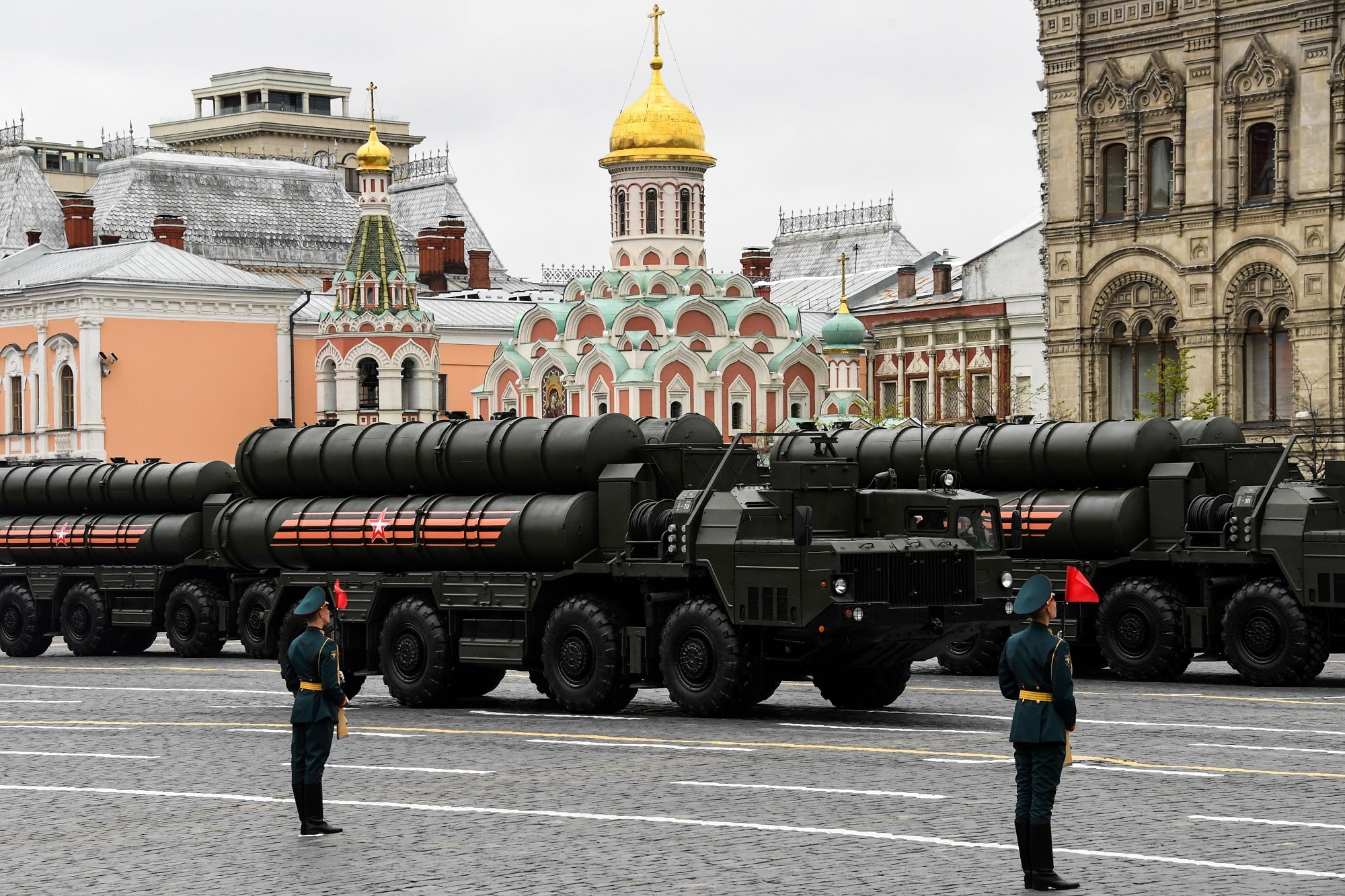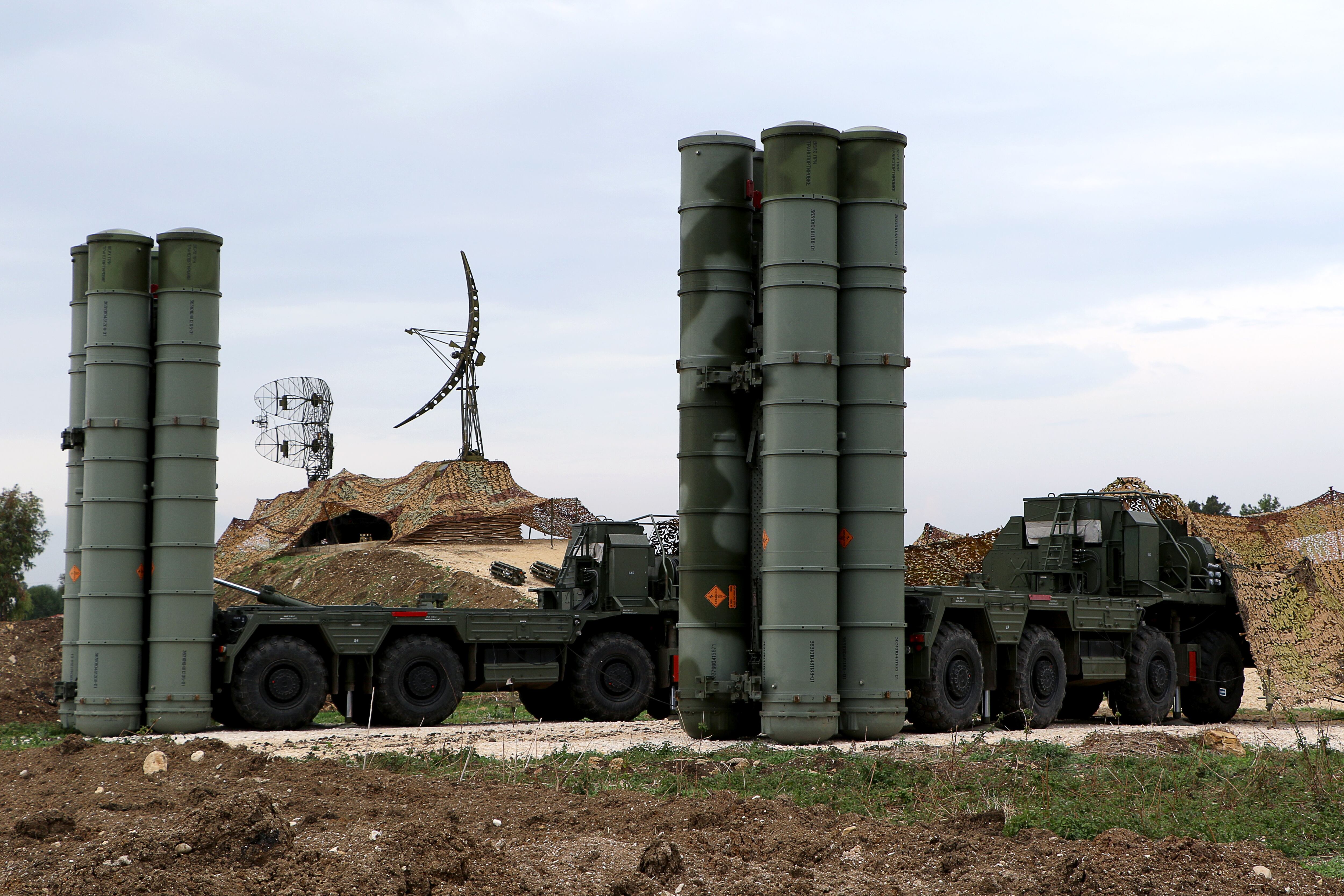MOSCOW — In mid-October, Russian Defense Minister Sergey Shoigu met with a Middle Eastern counterpart to discuss the war in Syria and “military-technological cooperation.”
At the meeting, Shoigu made a familiar declaration, according to state-run Russian news outlets, stating that Russia’s military campaign in Syria “is about to be completed.” It was not the first time Russia claimed to be on the verge of completing its military objectives in Syria. And last year, President Vladimir Putin even announced a partial withdrawal from the country — which ultimately turned out to be a restructuring of its presence.
To be sure, Moscow has accomplished a lot since it’s surprise September 2015 intervention in the Syrian conflict. Entering the fray in support of Syrian President Bashar Assad’s then-beleaguered military, Russian aircraft and an alleged murky mix of special operations forces and mercenaries decisively altered the course of the conflict in Assad’s favor. In doing so, Moscow spared an ally from an uncertain fate and secured regional bases.
But the Syria operation has paid off in another, unexpected way: The operation became a live-fire advertisement for a wide range of Russian weapons systems. Though Russian systems, especially aircraft, have always had a reputation as a cheap and decent alternative to more expensive Western systems, the campaign demonstrated they could be used to alter the course of a high-stakes conflict. And Russia is cashing in.
“Syria was indeed a testing ground for Russian weapons that allows it to market its arms globally,” said Yury Barmin, a Middle East expert with the Russian International Affairs Council. “However, this is something that Russia did not discover until after it went to fight in Syria. It certainly was not something that motivated Moscow to intervene in the conflict. I wouldn’t call it opportunism, but there’s no coherent strategy either.”
At a meeting of Russia’s military-industrial commission in April, Putin claimed that Russian arms export contracts were growing and that this was “largely a result of the more effective use of our weapons in real combat conditions,” the Tass news agency quoted him as saying. “This opportunity for gaining a firmer foothold in the world arms market should not be missed,” he told his defense industry leaders.
On the offensive
With arms exports plateauing as traditional clients like India and China pursue evermore domestic production, or customers like Venezuela go broke, Russia is actively pursuing all opportunity it can find in the Middle East.
In many ways, Russia’s approach to the Middle East arms market is opportunistic. As ties between the U.S. and Egypt, for example, strained in 2014, Russia swept in with a $3.5 billion arms deal to fill the void. Since then, Russia has been working to expand or restore arms sales to Soviet-era regional partners like Iraq, Iran, Libya and Algeria.
RELATED

According to the Stockholm International Peace Research Institute, Russia’s arms trade volumes generally grew in the Middle East last year. Though far from its main buyers, Moscow saw healthy trade with old regional partners. It delivered more than $1.5 billion in arms to Algeria, $37 million to Egypt, $374 million to Iran and $300 million to Iraq. Russia is courting Libyan Gen. Khalifa Haftar to reactivate an old billion-dollar deal.
But Russia’s most noteworthy efforts have been in pursuing deals with new partners, some of whom are reliable customers for the American defense industry — bolstering a sense in Washington that Moscow is pursuing a strategy of challenging U.S. dominance on all fronts. Last month, Russian-Saudi ties leaped forward as King Salman bin Adbul-Aziz Al Saud Salman descended a golden elevator in Moscow for the first time.
The visit saw much fanfare in Russia, and according to Saudi state television, the two signed contracts to purchase high-end Russian systems such as the S-400 air-defense system, Kornet-EM anti-vehicle weapons, some small arms and one of Russia’s nastier pieces of hardware: the TOS-1A thermobaric multiple rocket launcher system. Though not publicly announced, Russian media reports suggest a total value of $3 billion.
Russia has been flirting with other U.S. allies in the Gulf, too. Though mostly symbolic, Russia has signed “military-technical cooperation” agreements with Qatar, and it maintains close ties with Jordan. Concrete deals were made with the United Arab Emirates to the tune of $700 million last year, and this year, the two announced the co-development of a fifth-generation fighter based on the MiG-29.
But according to Andrey Frolov, the editor-in-chief of Moscow Defense Brief, a publication of the Moscow-based Center for Analysis of Strategies and Technologies, it is hard to attribute recent gains to the apparent success of Russia’s campaign in Syria. “Assessing the impact on arms sales is not easy since the negotiating process takes several years,” he said. However, customers are now asking for Kalibr cruise missiles on ships.
The view from Washington
Moscow’s efforts have not gone unnoticed in Washington, which is still struggling to come to terms with Russia elbowing its way into the Middle East. By far, Russia is causing greatest consternation in its ongoing flirtation with NATO member Turkey. Putin and Turkish President Recep Tayyip Erdogan, both strongmen leaders with similar political instincts, have been playing a back-and-forth game when it comes to arms sales.
The process seemed to conclude in September when Turkey made good on its threats to sign a significant arms contract with Russia for the receipt of the top-of-the-line S-400 air-defense system. Though Erdogan says a deposit has already been paid, there is some lingering doubt about the deal. Turkey has since made demands for Russia to locally produce the S-400s, something Moscow is unlikely to do.
Putin and Erdogan are still playing their game, it seems, and Erdogan is also playing a game with its NATO partners. And Turkey’s behavior has certainly ruffled feathers in Washington. Asked how the U.S. might respond to S-400s going into service in a NATO military, an administration official told Defense News on background that “we have made our views clear.”
RELATED

“While we certainly acknowledge that individual countries will exercise their own sovereign decisions about defense procurements,” the official said, “we also strongly believe that it is particularly important that NATO countries procure military equipment that is interoperable with NATO systems. A Russian system would clearly not meet that standard.”
The official also said that Turkey’s purchase of the S-400 would be “inconsistent” with pledges made by NATO allies at the 2016 Warsaw Summit to address existing dependencies on Russian-sourced legacy military equipment — a lingering vulnerability among the militaries of NATO’s newer members, who inherited swaths of their armed forces kit from the defunct Warsaw Pact.
While annoying to the U.S., Russia doesn’t seem to be pursuing a concerted strategy of undermining Washington’s status in the region, according to Becca Wasserman, an analyst at the think tank Rand. When asked if she believed Russia was intentionally trying to undermine interoperability among U.S. allies, Wasserman said: “I don’t think it’s the intention. I think it’s a happy byproduct.”
“In the same way that selling weapons to the Gulf states Russia happens to also undercut the U.S., this [complicating interoperability among U.S. allies] is just a happy secondary thing that happens,” Wasserman said. “It is more about the economic gain as well as the political relationship they strengthen through these sales.”
RELATED

The view from Moscow
Russia’s arms sales in the Middle East do not take place in a vacuum. While driven by defense industry interests, they are seen in Moscow as part of a broader Russian effort to reassert itself as a player of major consequence. Russia’s expert community likes to talk of an emerging multipolar world order, and Moscow in many ways tries to act as if that is already the case. But it is difficult to attribute any strategy to its actions.
“Russia is not seeking to displace the U.S. in the Middle East, just cut it down to size,” says Vladimir Frolov, an independent Russian foreign affairs analyst. “Russia sees weapons sales as additional leverage and a tool to create dependency on Moscow. Sales to the Gulf, particularly to Saudi, are seen as a tool for other foreign policy objectives, to facilitate agreements on political issues and create stakeholders in relations with Russia.”
While arms sales are certainly seen by the government as tools in a larger game, the arms trade in Russia is a little more complicated than that. “To a great extent these deals are often worked out independently,” according to CAST’s Andrey Frolov. “For example, deliveries to Syria are handled by the Defense Ministry and taken from military stores. The state export agency Rosoboronexport has nothing to do with this.”
This jibes with the sometimes diffused nature of decision-making in Russia. Contrary to common perception, Putin does not preside over everything that happens. He sets the general tone and path, and hundreds of officials below him try to interpret and act according to perceived wishes. This makes dealing with Russia difficult, but it also makes formulating and pursuing broad strategy difficult for the Kremlin.
As far as Russia’s competition with the U.S. in the Middle East arms trade goes, the situation was best described by independent analyst Vladimir Frolov: “Russia’s strategy in weapons sales is to sell everything to everyone with little geopolitical consideration and zero human rights concern. And Russians will try to seize every opportunity where the U.S. is seen as an unreliable partner. Egypt and Turkey are just the most recent examples.”
Aaron Mehta in Washington contributed to this report.
Matthew Bodner covered Russian affairs for Defense News.








